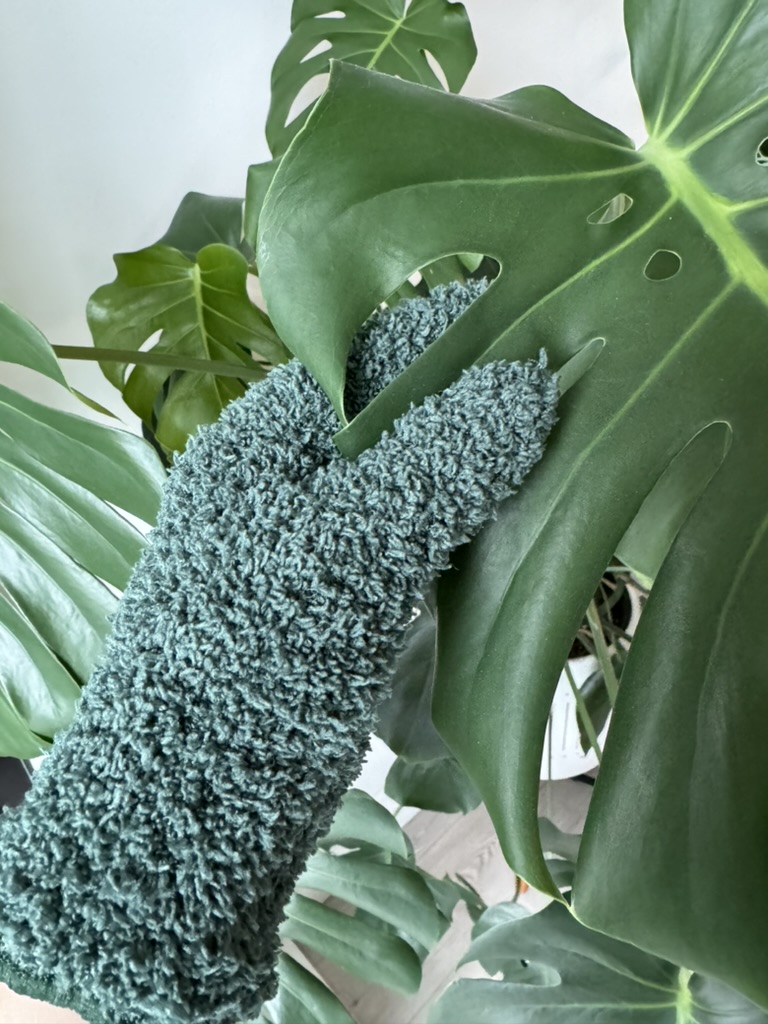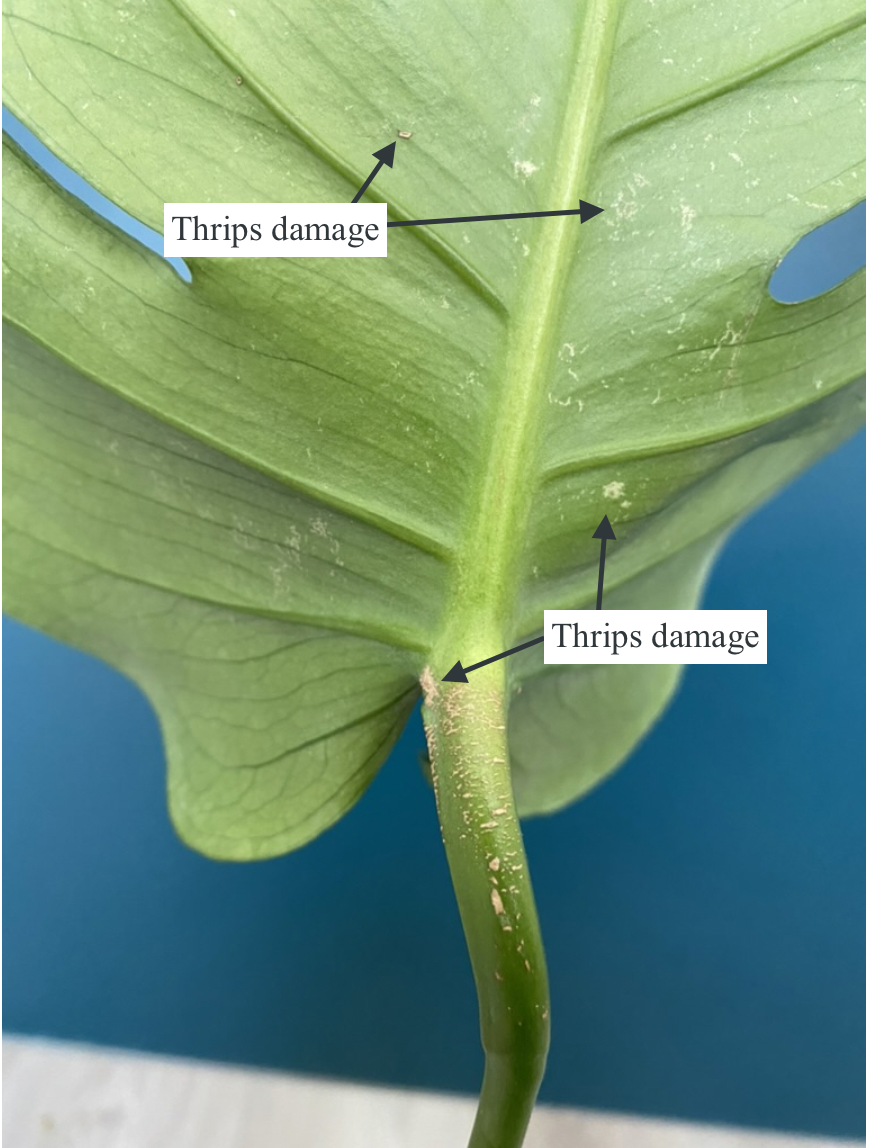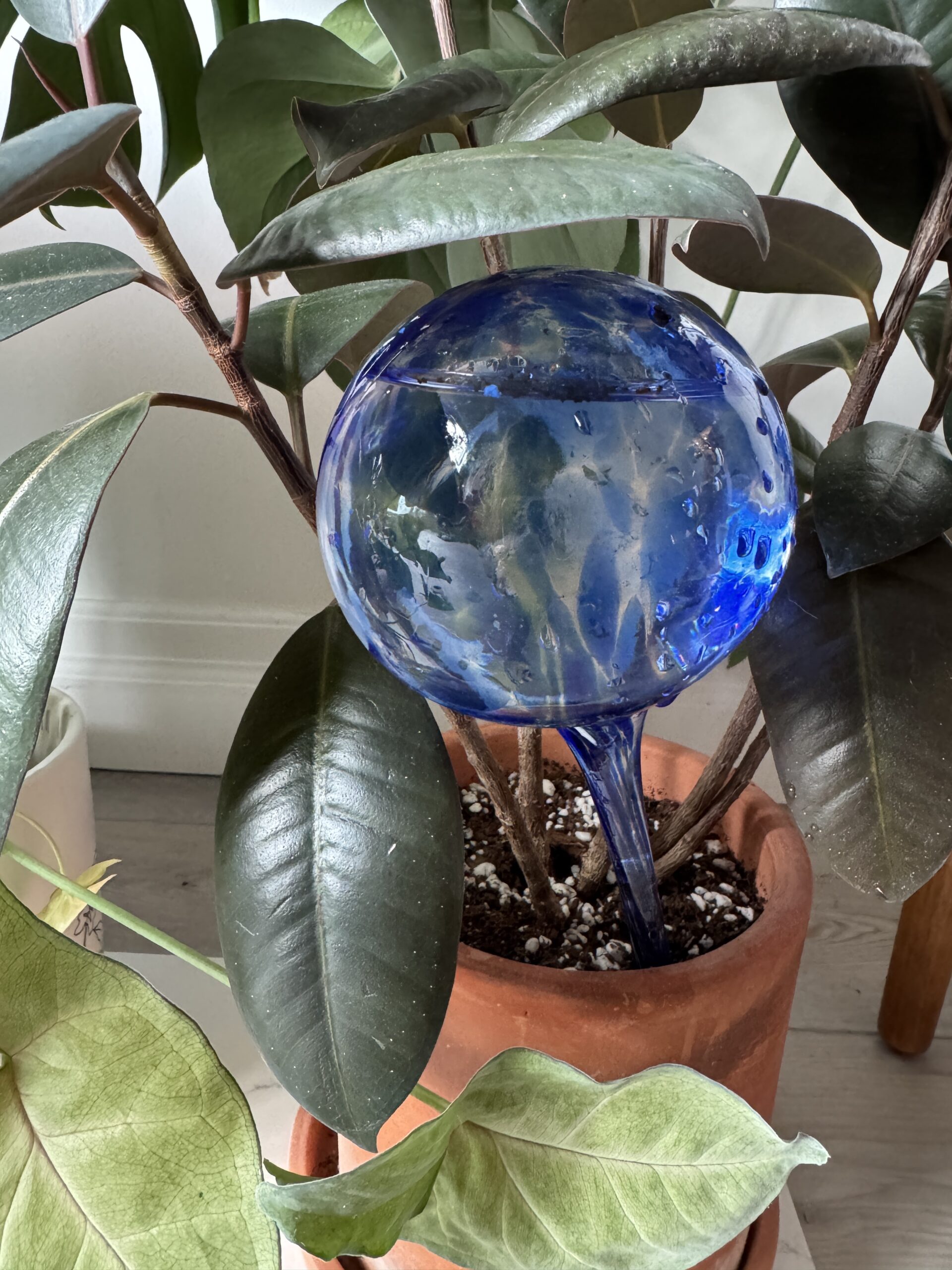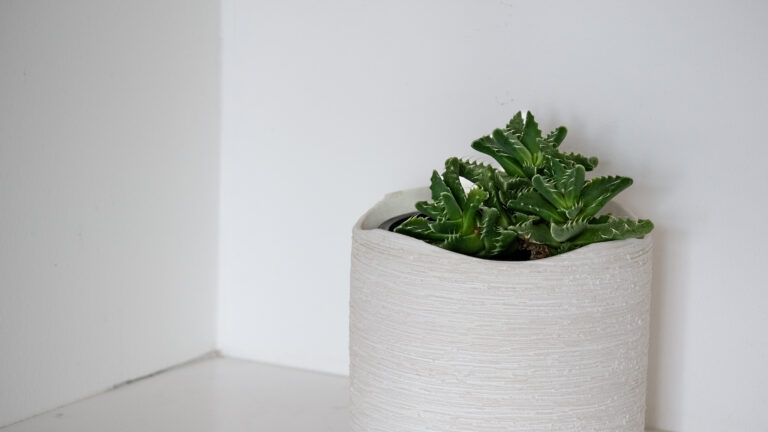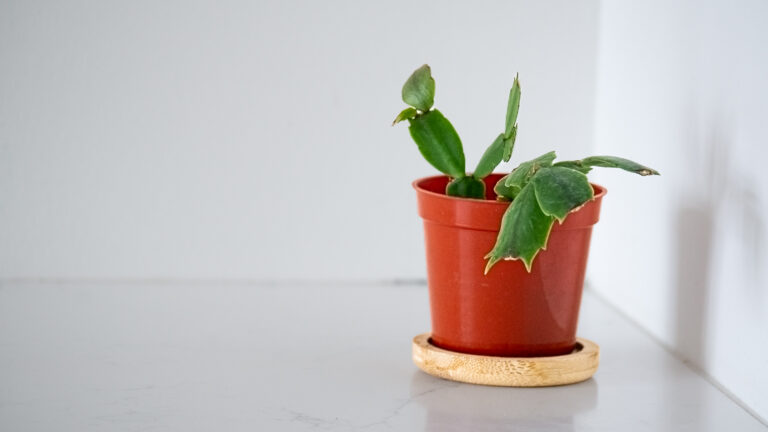Dragon Fruit Cactus or Hylocereus undatus is a member of the Cactaceae family. It is likely native to Central America, but it is also found in North America, South America, and certain parts of Asia.
Hylocereus undatus is referred to as the Dragon Fruit Cactus because it produces Dragon Fruit under the right conditions.
There are around 1,866 species of the Cactaceae family.
Dragon Fruit Cactus at a glance.
Dragon Fruit Cactus Appearance & Growth Habit
Dragon Fruit Cactus is a vining plant with green foliage. The branches will grow aerial roots for support. When growing indoors, its best to give the plant a support it can climb up.
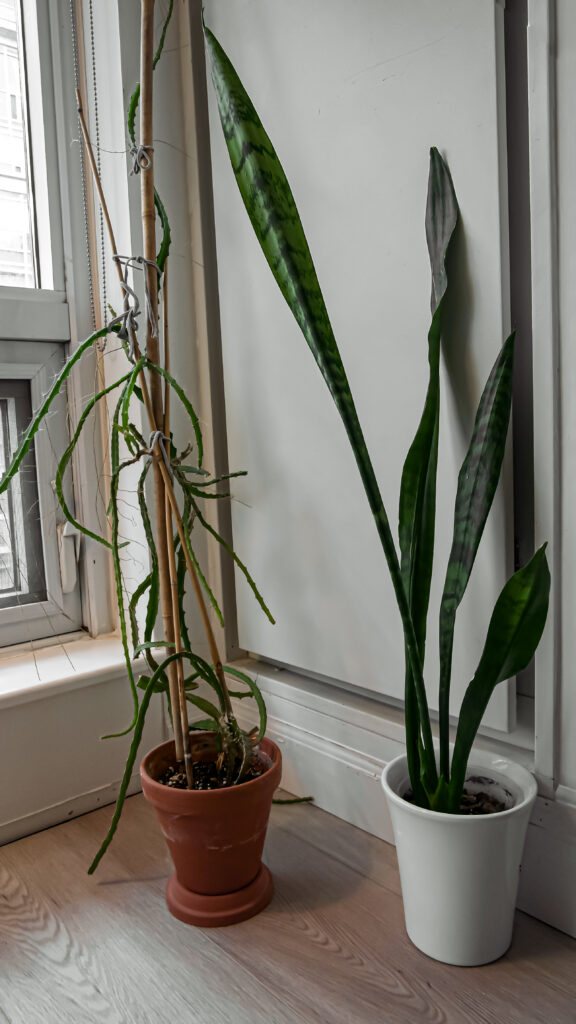
Light Requirements for Dragon Fruit Cactus
Dragon Fruit Cactus thrives in bright light. They prefer 6-8 hours of sun in east or west facing windows. South facing windows may be too intense.
While Dragon Fruit Cactus grows in sunny environments in the wild, it grows best when the light is blocked or filtered by larger items like rocks or big plants.
Ideal Temperature & Humidity for Dragon Fruit Cactus
Dragon Fruit Cactus prefers a temperature between 18-29 degrees celsius. They also prefer lower to average humidity (30%-50%). Since they come from tropical and subtropical regions, they prefer average to moister air, but do well in average household humidity levels (40-50%).
I keep my cacti closer to the window and further from the humidifier (I use the Levoit Hybrid Ultrasonic Humidifier (LV600HH)).
I use my humidifier to ensure the humidity levels in my apartment stays between 40% and 60%. Since I live in Canada and the winters can be very dry, and the humidity can drop below 30% humidity, so its helpful to set the humidity at about 45% or 50% in this season to keep all of my plants helpful.
Growth Rate & Fertilizer Needs for Dragon Fruit Cactus
On average, Dragon Fruit Cactus can grow up to 20 feet. This is a vining plant and does best by having something to climb up.
To assist in its growth, the branches will grow aerial roots. Our Dragon Fruit Cactus is in a corner, and it grows up a bamboo pole and the wall. The aerial roots support this growth habit.
Our Dragon Fruit Cactus is more than 6ft tall. It’s about 7 years old.
Newer growth is brighter green and the spines seem brighter as well.
To encourage growth, fertilize your Dragon Fruit Cactus once a month during the spring and summer growing season.
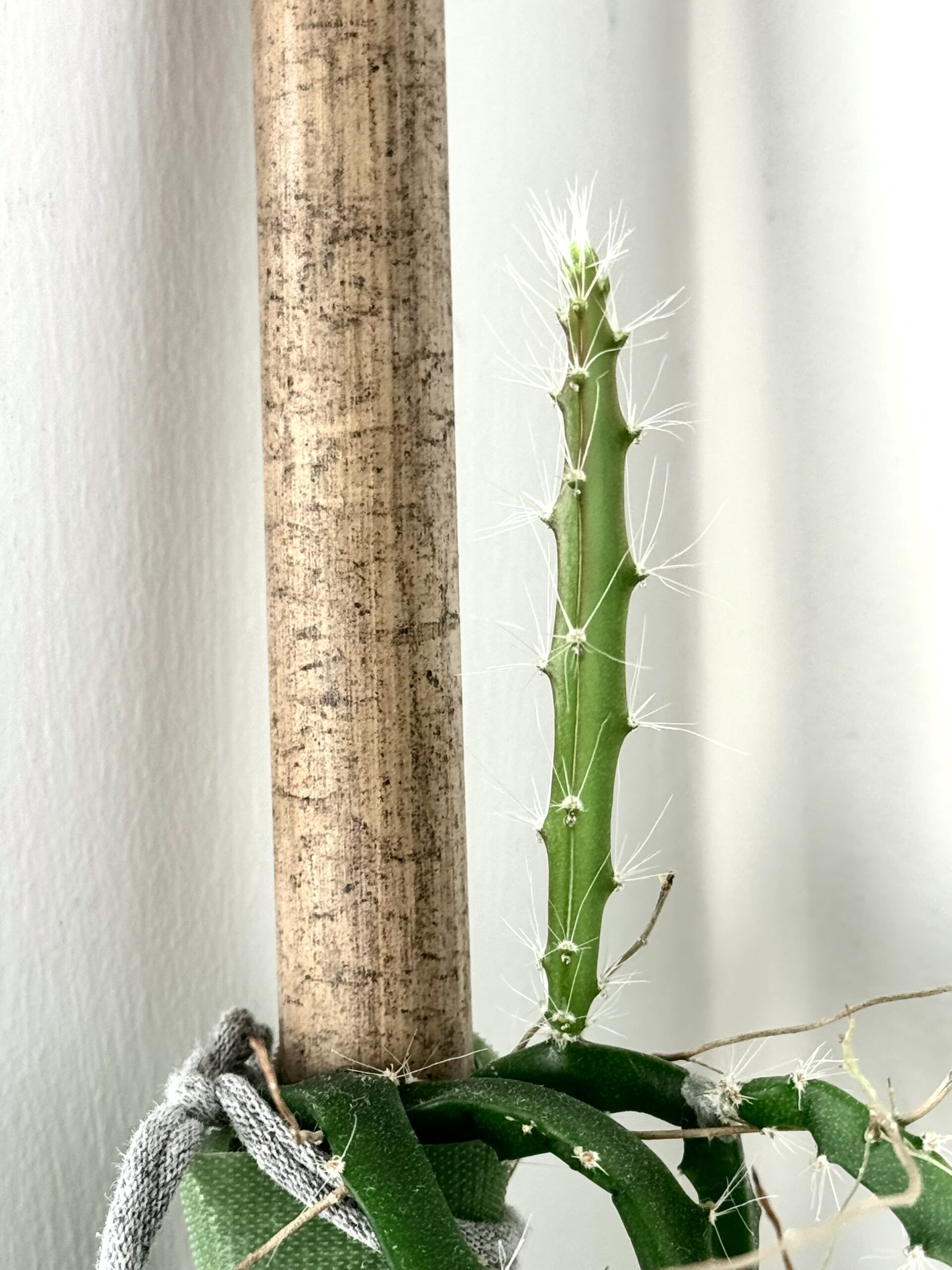
How & When to Repot Dragon Fruit Cactus
Repotting a Dragon Fruit Cactus is a bit tricky. Between the spines, and it being staked, it can become difficult to repot it with having good grip on the plant, but not hurting yourself by touching the spines. Gloves are a must.
You will know it is time to repot your Dragon Fruit Cactus if it has been two years since your last repot, the roots are growing out of the drainage hole or circling the bottom of the pot, growth has slowed, or you have to water it more frequently.
The best time to repot is in spring, just before the active growing season. Choose a sturdy pot with excellent drainage and fresh cactus mix, and support the plant with a stake as it grows taller.
Dragon Fruit Cactus Repotting Steps
- If the Dragon Fruit Cactus needs to be potted up, grab a new pot with a drainage hole that is 2″ larger. Cover the bottom with new, fresh cactus soil.
- Put on your gloves, loosen the Dragon Fruit from its current pot (while attached to the stake if possible), and place it in the center of the new pot.
- Continue to add soil around the Dragon Fruit Cactus within the pot. Ensure the stake in the center is secure.
- Place your Dragon Fruit Cactus back in its well lit place within your home, and water the plant.
For everything you will need to repot your Dragon Fruit plant, check-out my guide on repotting essentials.
Dragon Fruit Cactus Blooming: What to Expect
The Dragon Fruit Cactus does bloom. It produces nocturnal blooms (the flowers open at night) to attract nocturnal pollinators like bats and moths.
These flowers are large, fragrant, and white. They are often referred to as “moonflowers” or “Queen of the Night.”
These spectacular blooms typically appear in late spring or summer and last for just one night.
Fruiting and blooming typically only happens if you keep your Dragon Fruit Cactus outside since it needs pollination to fruit. Successful blooming and fruiting usually requires plenty of sunlight, warm temperatures, and pollination. Sometimes hand pollination if grown indoors or in areas without natural pollinators.
How to Propagate Dragon Fruit Cactus (Cuttings & Seeds)
The easiest way to start a new Dragon Fruit Cactus is by stem cuttings.
- Stem Cuttings: Choose a stem from a healthy adult plant. Make sure the cutting has at least one node or this method won’t work. Wait for the cutting to callus over in a well lit spot. This should take a couple of days. Once the callus is formed, you can pot it into a well-draining potting mix, and give it a little water.
- Soil propagation: With soil propagation, you can take a cutting and put it directly in soil. You can also use rooting hormone on the cutting before putting it in the soil if you prefer. I don’t do this though. You won’t be able to see if the plant is rooting in the soil, but if the plant eventually dies, you know it didn’t root successfully. With soil propagation, you don’t have to worry about transplant shock though.
- Seeds: You can take seeds from an actual Dragon Fruit, plant, and sow the seeds. The soil should remain consistently moist until germination occurs.
Patience is key with propagation. Give your new plant time to settle into its environment. Once you see new growth, you know your plant is well established.
Watering Dragon Fruit Cactus: How & When
The Dragon Fruit Cactus likes to dry out between waterings. To determine if your plant needs water, you can stick your finger in the soil (1 to 2 inches) and if it is dry, its ready for water!
If you don’t want to get your hands dirty, you can try a moisture meter (I personally have not used one, but I know quite a few people who do, and this one is really highly rated on Amazon).
This plant typically needs to be watered every three to four weeks (depending on your environment). The Dragon Fruit Cactus is really sensitive to overwatering.
I always recommend bottom watering plants through the drainage hole of the pot on a tray. It’s the easiest way to know if your plant is thirsty or not. Overwatering can lead to fungus gnats, root rot, or the death of your plant.
You can top water, but it’s best to do so in a pot with drainage until water is flowing out of the hole. If your pot doesn’t have drainage, you might accidentally drown your plant or make some fungus gnats very happy.
You should top water from time to time to make sure any built up minerals can wash through the plant. The water should drip out of the bottom of your drainage hole.
If you are going to be away for an extended period of time and are worried about watering your plants, check-out my guide on 3 ways to keep your plants alive while on vacation.
Common Pests & Problems in Dragon Fruit Cactus
Dragon Fruit Cactus can face the following pests and problems.
Pests of Dragon Fruit Cactus
Mealy Bugs
Mealy Bugs look like little white cotton balls on the plant. You can remove these with your fingers if you catch them early enough, but I would use a cotton swab with a drop of Isopropyl alcohol and try to scrape them off the stem.
Scale
I’ve never personally had scale (knock on wood) and I am very thankful. Scale are small, brownish, round or oval insects that attach themselves to the leaves or stems of the plant. They are hard to notice as they appear like a growth or bump on the plant. Scale can cause yellowing, wilting, and weakened growth. Removing scale from a plant is tedious, like with mealybugs. You can remove scale by manually removing them with a cotton swab with rubbing alcohol, using insecticidal soap or neem oil.
Aphids
Aphids are small, insects that cluster under leaves and stems. They can appear white, brown, black, gray, light green or yellow. If you see distortion, wilting or yellowing leaves, this can be a sign of aphids. You should be able to spray them off with a strong stream of water or using insecticidal soap.
Spider Mites
If spider mites have taken to your plant, spray them with a mixture of neem oil, dish soap and water (or you can buy an insecticidal soap). I repeat this about once or twice a week (depending on the severity of infestation) for about a month. It’s also good to do this preventatively once a month or so. You will know you have spider mites if you see webbing and leaf damage. Learn how to eradicate Spider Mites.
Thrips
Thrips are little, dark bugs that look like dirt. They suck the life out of the leaves, and lay eggs within the tissue of the leaf. As they age, they can grow wings and infect other plants. I spray the plant with a mixture of neem oil, dish soap and water. I repeat this every few days to try and get both the pest and the eggs. Sometimes I just chop the affected leaf since they are hard to eradicate. Complete guide on how to get rid of thrips.
Fungus Gnats
Spray the plant with a mixture of neem oil, dish soap and water. I also let the soil dry out and add dryer sheets on top of the soil so the gnats can’t sense the moisture on the soil.
Other Common Problems of Dragon Fruit Cactus
- Yellowing Stems: This is a sign of over- or under- watering, nutrient deficiency or lighting issues.
- Overwatering: Root rot happens from overwatering your plant with insufficient drainage. You can improve the drainage of your plant by ensuring your plant is potted in a planter with a drainage hole and using a well draining soil (something with a decent amount of perlite). You can also end up with fungus gnats or fungal disease from overwatering.
- Underwatering: Even though plants prefer to be underwatered over overwatered, you still have to remember to water it on a consistent schedule. Signs of underwatering an include leaves becoming shrivelled, discoloured or dry.
- Sunburn: Even though you will often find this plant in bright, sunny environments, they can be burned. Just like in humans plants can burn. Their leaves can start to turn red, yellow, white, bleached or sometimes kind of purple. To fix sunburn in the plant you can move it to a less sunny place.
- Cold temperatures: Damage from cold temperatures can lead to vulnerability to disease, visible discolouration, growth stagnation or death. You can prevent this by making sure your plant is not exposed to environments below the recommended temperatures.
- Improper Support: Inadequate support can lead to the plant becoming heavy and breaking. It’s important to provide a steady pole or trellis.
- Edema: These are small bumps that can appear on the stems if there is inconsistent watering.
- Poor or No Fruit Development: If your plant is indoors, you will need to hand pollinate the plant. This can only happen if the plant flowers though. It is much easier to develop fruit if the plant is placed outside for nature’s pollinators.
- Fungal Disease: This can occur if there is too much humidity and from overhead watering.
Dragon Fruit Cactus Toxicity
Dragon Fruit Cactus are typically not toxic to touch or consume for humans or pets. However, some people may experience allergic reactions, or skin irritation from the plant’s spines (if you touch it without wearing gloves).
The fruit however, is edible and widely enjoyed.
Dragon Fruit Cactus Quick Care Guide
| Scientific Name | Hylocereus undatus |
| Nickname | Dragon Fruit Cactus, Pitahaya, Moonlight Cactus, Honolulu Queen, Strawberry Pear |
| Origins | Central America, North America, South America |
| Light | Bright, east or west facing window, 6-8 hrs of sun a day |
| Temperature | 18-29 degrees celsius (preferred) |
| Humidity | Lower (30-50%) |
| Height | Up to 20 feet |
| Blooms | Yes |
| Propagate | Stem cuttings, Seeds, Offshoots, Grafting |
| Water Frequency | When dry (likely once a month) |
| Pests | Mealy Bugs, Aphids, Scale, Spider Mites, Thrips |
| Common Problems | Overwatering (root rot), underwatering, fungal disease, sunburn, cold temperatures, edema, inadequate support, lack of fruit or flowers |
| Toxicity | Non-toxic |
References
Below is a list of external sources I consulted while writing this post. This post is a mixture of my own experiences, and the external sources listed below:
The Spruce – Growing Dragonfruit Plants
The Spruce – Growing Dragonfruit Cactus Indoors
National Library Board Singapore Dragon Fruit

